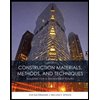What is the additional method in use for determining the permissible or safe design loading?
What is the additional method in use for determining the permissible or safe design loading?
Working stress method:
It was the standard design approach not only for RCC, as well as for steel structures and timber construction. The technique essentially assumes that even the structural material works in a linear elastic nature and that sufficient protection can be assured by adequately minimizing the stresses in the material caused on the structure by an anticipated "working loads."
The presumption of linear elastic deformation is considered justifiable, as even the stated allowable stresses are held far below the strength. The material's resistance ratio to the allowable stress is also referred to as the F.O.S. However, it is not considered to be true the key assumption of linear elastic action and the implicit assumption that stresses beneath working loads could be held within the 'allowable stresses'.
Several factors which are responsible for all of this, including creep and shrinkage activity, the impact of stress concentrations as well as other side effects. In either a redistribution of measured pressures, all these effects result in substantial local increases.
The architecture typically leads to relatively large parts of structural components, resulting in improved performance of durability under the normal workloads.
Ultimate load method:
With the rising awareness of WSM 's limitations in RCC design, and with a better study of the mechanism of RCC at peak stress, the ultimate design load is emerging and becoming an option to WSM.
This approach is also often referred to as measures of load factor being the ultimate power. For this process, the stress state at the site of its structure's imminent collapse is measured, and thus the nonlinear stress-strain profiles of steel and concrete are being used.
Through this approach, the definition of 'modular ratio' and its related problems are absolutely avoided. he nature of the security precaution is implemented by a suitable choice of the load factor, described as the ratio of the ultimate to working load.
The ultimate load approach allows different load forms to be allocated different load factors within combined load conditions, therefore eliminating the associated WSM deficiencies.
This approach usually results in slender parts, and often cost-effective designs of structural members, particularly when using high strength reinforced steel and concrete. Nevertheless, the satisfying performance of 'power' at the ultimate loads can not ensure satisfactory performance of 'serviceability' at regular service loads.
Due to the slender parts resulting from its use high strength reinforced steel and concrete, the models sometimes result in severe deflections as well as crack-widths during service loads.
At just the ultimate load, the spread of stress effects is taken as that of the spread at just the service loads, amplified by the load factors.
Step by step
Solved in 3 steps




